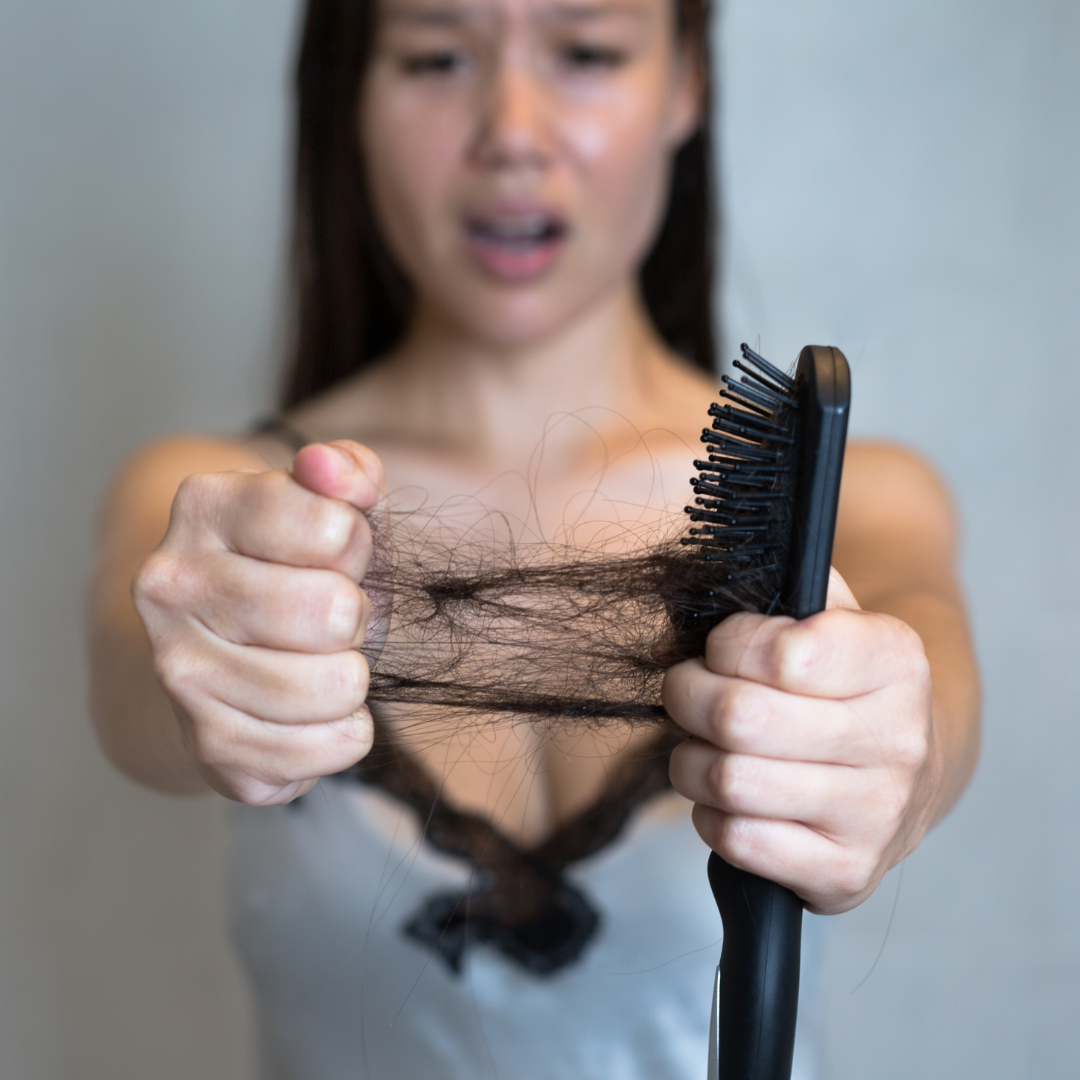
The Complex Web of Female Pattern Hair Loss: A Phenomenon Linked to Declining Estrogen
The tapestry of femininity is richly woven with strands of beauty, strength, and resilience. Among these strands, hair holds a unique place, often seen as a symbol of vitality and allure. Yet, as women navigate the later stages of life, they encounter a less-discussed but deeply impactful issue: female pattern hair loss. Unlike its male counterpart, this form of hair loss often manifests later in life, closely tied to declining estrogen levels. This article aims to unravel the complexities of this late-life phenomenon, from its hormonal underpinnings to its emotional implications.
Biological Underpinnings
The Lifecycle of Hair: An Ever-Changing Narrative
Hair is not a static entity but a dynamic one, governed by a cycle of growth, transition, and rest. Disruptions in this cycle can lead to hair loss, a phenomenon that gains prominence as estrogen levels decline in women.
The Biological Foundations of Female Pattern Alopecia
The Hair Life Cycle
To grasp the intricacies of hair loss, one must first understand the hair life cycle, which unfolds in three distinct stages:
- Anagen: The phase of active growth, lasting 2-7 years.
- Catagen: A brief transitional period spanning 2-3 weeks.
- Telogen: The resting stage, lasting around 3 months, after which the hair is shed.
Types of Female Hair Loss
- Androgenetic Alopecia: The female counterpart to male-pattern baldness, this is the most common form of hair loss in women.
- Alopecia Areata: An autoimmune condition resulting in sporadic, patchy hair loss.
- Telogen Effluvium: Temporary hair loss triggered by stress or significant life events.
- Anagen Effluvium: Hair loss induced by chemotherapy or specific medications.
The Role of Estrogen
Estrogen, a hormone integral to female physiology, serves as a protective agent for hair follicles. Its decline, especially during menopause, can lead to hair thinning and loss.
Debunking Widespread Myths
Myth 1: Hair Loss is an Elderly Woman's Concern
Though the risk increases with age, women can experience hair loss as early as their twenties or thirties.
Myth 2: Tight Hairstyles Lead to Hair Loss
While tight hairstyles can cause localized hair loss, they are not a primary cause of female pattern alopecia.
Myth 3: Hair Loss is Solely Maternal
Genetic factors are at play, but both maternal and paternal genes can influence hair loss.
Myth 4: Over-Shampooing Causes Hair Loss
Shampooing merely removes already-shed hairs and does not contribute to hair loss.
Contributory Elements
Stress
Elevated stress levels can trigger temporary hair loss due to hormonal imbalances.
Diet and Nutrition
A deficiency in vital nutrients like iron and protein can exacerbate hair thinning.
Medications and Therapies
Certain treatments, including hormone replacement therapy and chemotherapy, can induce hair loss.
Lifestyle Choices
Unhealthy habits like smoking and excessive alcohol consumption can also contribute to hair loss.
Diagnostic Techniques
- Scalp Biopsy: A small scalp segment is analyzed to assess hair follicle health.
- Blood Tests: These can reveal hormonal imbalances or nutrient deficiencies.
- Trichoscopy: A digital imaging method for evaluating scalp and hair condition.
Therapeutic Pathways
- Minoxidil: An over-the-counter topical solution that can slow hair loss and encourage new growth.
- Hormone Replacement Therapy: A prescription treatment aimed at restoring estrogen levels.
- Hair Transplant: A surgical procedure to relocate hair follicles to thinning areas.
- Low-Level Laser Therapy: Lasers stimulate hair follicles to improve hair density.
Proactive Measures
- Nutrient-Rich Diet: A balanced diet supports robust hair growth.
- Stress Alleviation: Techniques like meditation can help manage stress, reducing hair loss risk.
- Regular Medical Consultations: Frequent check-ups can preempt underlying issues that may lead to hair loss.
The Emotional Quotient
The psychological ramifications of hair loss in women are profound, affecting self-esteem and emotional well-being. Support from family, friends, and professional counseling can offer invaluable emotional sustenance.
Conclusion
Female pattern alopecia is a multifaceted issue, influenced by a range of factors including hormonal changes, genetics, and lifestyle choices. By dispelling myths and understanding the underlying science, women can take empowered steps to manage this condition. A variety of treatment options offer not just cosmetic relief but also a pathway to emotional and psychological well-being.
Myths and Reality
The Late Bloomer
Contrary to the early onset seen in male pattern hair loss, female pattern hair loss is generally a later-life event. This distinction underscores the role of declining estrogen levels, rather than age alone.
Stress: A Red Herring
While stress can contribute to hair loss, attributing female pattern hair loss solely to stress overlooks the significant hormonal shifts at play, especially the decline in estrogen.
Additional Factors
Nutritional Nuances
A balanced diet, rich in essential nutrients like iron and protein, is not just a cornerstone of overall health but also a critical factor in maintaining hair health.
Medicinal Impact
Certain medications, including some forms of hormone replacement therapy, can exacerbate hair loss, adding another layer of complexity to its etiology.
Diagnostic Advances
Modern diagnostic tools, such as scalp biopsies and blood tests, offer invaluable insights into the type and extent of hair loss, facilitating targeted treatment plans.
Therapeutic Avenues
From topical treatments like Minoxidil to hormone replacement therapies aimed at restoring estrogen levels, various treatment modalities offer hope and efficacy.
Emotional Resonance
The psychological impact of hair loss in women is profound, often leading to diminished self-esteem and increased social anxiety. These emotional dimensions necessitate a holistic approach to treatment.
Conclusion
Female pattern hair loss is a complex issue that gains prominence as estrogen levels decline later in life. Far from being a mere cosmetic concern, it is a significant life transition that intersects with a woman's emotional and psychological well-being. A nuanced understanding of its complexities allows us to approach treatment not as a superficial endeavor but as a pathway to holistic health and emotional equilibrium.










